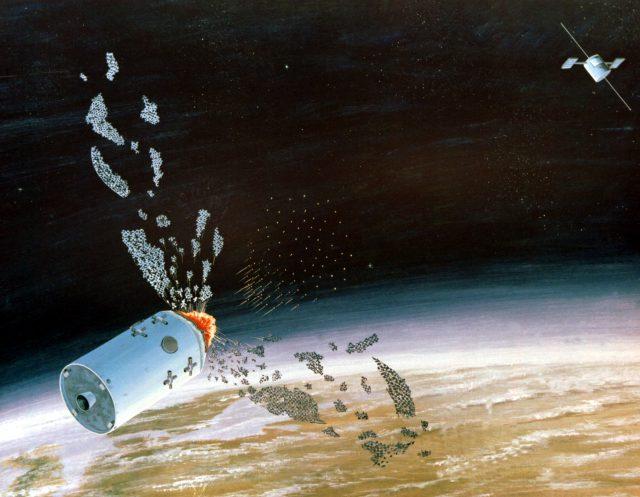The strategic holiday is over (part 2)
Posted By Malcolm Davis on February 8, 2018 @ 06:00

In my last post, I considered the high-level strategic policy implications of strengthening Australia’s relationships with the US and other nations as part of an effort to support the US national defence strategy [1] (NDS). That will require greater coordination between Australia, the US and our Asian partners on capability development.
One contribution we could make immediately is to acquire the ability to carry out long-range strikes, thus filling a gap in the ADF’s force structure as envisaged in the 2016 defence white paper and the integrated investment program (IIP). As I’ve explored [2] previously, that could involve installing naval land-attack cruise-missile systems on submarines and naval surface combatants. Or, in the longer term, we could acquire common long-range bomber systems alongside the US. That would demand careful diplomatic coordination in the region to avoid misperceptions and reassure our partners about why we’re acquiring such a capability. We’d need to make it clear that the overall objective would be to counter China’s advantages in anti-access and area denial (A2AD) operations.
Achieving that outcome is not going to be a quick process. There’s no technological ‘easy fix’, and Chinese efforts to enhance A2AD [3] with new weapons will certainly accelerate. The NDS provides some broad guidance, though no specifics, on possible approaches, emphasising a need for a joint force (taken to include a coalition component) that can ‘strike diverse targets inside adversary air and missile defense networks to destroy mobile power projection platforms’. It argues that forces that can ‘deploy, survive, operate, manoeuver, and regenerate in all domains’ and operate from ‘smaller, dispersed, resilient adaptive basing’ would be particularly important. And it talks about developing advanced autonomous systems and using artificial intelligence to gain a competitive military advantage.
Australia should identify the key operational domains in which it can contribute most effectively to countering A2AD at a reasonable cost and within a fairly short period. First, we should strengthen our anti-submarine warfare (ASW) capabilities, particularly for supporting expeditionary operations as part of a coalition alongside the US and other partners in the Western Pacific. That could involve enhancing our broad area undersea domain awareness by deploying fixed and deployable sensor arrays, combined with greater coordination with allies that operate ASW-capable ships and patrol aircraft in disputed maritime regions. Building and sharing a common operating picture of the undersea battlespace, not just in our maritime approaches but in areas such as the South China Sea, would be a useful regional response to the growing challenge posed by ever-quieter Chinese submarines.
Accepting a need to blunt A2AD will also demand that we quickly gain and maintain a knowledge edge in wartime. In future conflicts that’s going to become more challenging as China and Russia develop counter-space [4] and cyberwarfare [5] capabilities designed to attack our command and control networks, and as they exploit systems such as hypersonic weapons [6] to compress time and space in the operational environment. So Australia needs to focus more on ensuring access to, and control of, both space and cyberspace as future operational domains.
The space domain is becoming more important as joint and coalition forces increasingly rely on space systems to fight information-based warfare. To adapt the warning of Lord Montgomery of Alamein, if we lose control of space, we lose the war and we lose it quickly. Australia can contribute to US space resilience and boost deterrence in space by developing an ability to support the reconstitution of US space assets after an adversary’s counter-space attack. Thankfully, Australia seems to be ready to take steps to develop indigenous space capabilities, and looks to do more in the ‘space segment’. We are well placed to develop small satellites and offer southern hemisphere space launches in support of our allies. This would build on our ongoing contribution to space situational awareness as a member of the Five Eyes Combined Space Operations partnership [7].
The cyber domain is increasingly linked to space. Adversary counter-space capabilities are beginning to include ‘soft kill’ mechanisms, including cyberwarfare [8]. Efforts to develop coalition-based offensive and defensive cyberwarfare capabilities can strengthen space resilience and threaten an opponent’s space systems, reinforcing the credibility of deterrence against counter-space attacks. Cyber might not be a tangible capability like warships, but winning in cyberspace is just as important as winning at sea.
We need to take some bold steps if we’re to respond effectively to a more dangerous security outlook. This will mean challenging some sacred cows in the defence white paper and IIP. That would be hard, but not impossible.
Acquiring new weapons and equipment would require boosting defence spending above the planned 2% of GDP, but we must be prepared to spend more, based on a hard-headed assessment of what capabilities are most relevant to the emerging operational environment.
Finally, we need to resolve the strategic disconnect between our recognition that the security situation is deteriorating and our relaxed attitude towards obtaining the equipment we need to defend ourselves. A prime example is the promised fleet of 12 future submarines, the first of which won’t reach the fleet until 2032 at the earliest. And we won’t have more than six until the mid-2040s. In the meantime, we’re dependent on upgrading what by the 2030s will be an ageing Collins fleet to keep pace with the rapidly changing undersea warfare capabilities of our adversaries. Fast-tracking the future submarine project would make a lot of sense given the challenges looming on the horizon.
Article printed from The Strategist: https://aspistrategist.ru
URL to article: /strategic-holiday-part-2/
URLs in this post:
[1] US national defence strategy: https://www.defense.gov/Portals/1/Documents/pubs/2018-National-Defense-Strategy-Summary.pdf
[2] explored: /closing-adfs-deterrence-gap/
[3] Chinese efforts to enhance A2AD: /towards-chinas-a2ad-2-0/
[4] counter-space: http://spacenews.com/op-ed-chinas-well-crafted-counterspace-strategy/
[5] cyberwarfare: https://www.fifthdomain.com/home/2017/06/08/dods-annual-china-assessment-shows-growing-cyber-ew-capabilities/
[6] hypersonic weapons: https://thediplomat.com/2017/12/introducing-the-df-17-chinas-newly-tested-ballistic-missile-armed-with-a-hypersonic-glide-vehicle/
[7] Five Eyes Combined Space Operations partnership: https://breakingdefense.com/2014/05/us-closest-allies-sign-space-operations-agreement/
[8] cyberwarfare: https://www.chathamhouse.org/sites/files/chathamhouse/publications/research/2016-09-22-space-final-frontier-cybersecurity-livingstone-lewis.pdf
Click here to print.